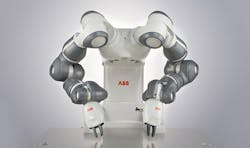8% Growth Predicted for Automated Material Handling
Automated material handling market is growing with a CAGR of around 8% attributed to increasing demand for the automated solution from various applications like manufacturing, automotive and electrical, according to a new report by Occams Business Research & Consulting.
The demand behind the growth for these systems comes mostly the automotive and electrical manufacturing sector.
Industrial robots in these two sectors are high compared to other industries. In 2015, around 1500 industrial robots are being used in automotive application for per 10,000 population in the U.S.
In other parts of the world growing expansion of manufacturing facility in emerging economies such China have boosted the requirement for automated material handling across industries.
The International Federation of Robotics reports that around 60,000 industrial robots were sold in China only in 2015. In 2016, the demand for industrial robots is around;$3 billion in China only. Such high demand for industrial robots has been witnessed due to the increasing investment in automation by a wide range of domestic industries in China.
Looking at the overall global market, in 2015 around 240,000 industrial robots were sold representing a 25% increase in the sales from 2014. Again the automotive and the electronics industry were the key drivers for this growth.
As robots become more technologically advanced the demand in the material handling sector is pushing demand up. For example, in 2015, ABB introduce dual arm, collaborative, small parts assembly robotic system named "YuMi". Also KUKA Robotics also produced a sensitive collaborative industrial robot termed "LBR iiwa" in 2015. Other companies, including Universal Robotics are innovating new technology for the automated material handling.
Growth could be even larger if it wasn’t for the need of large investments in the development of more advanced industrial robots. It is expected that from 2015 to 2025 the investment in all type of automation rise to around $190 billion by 2025 up from around $10 billion in 2015.
